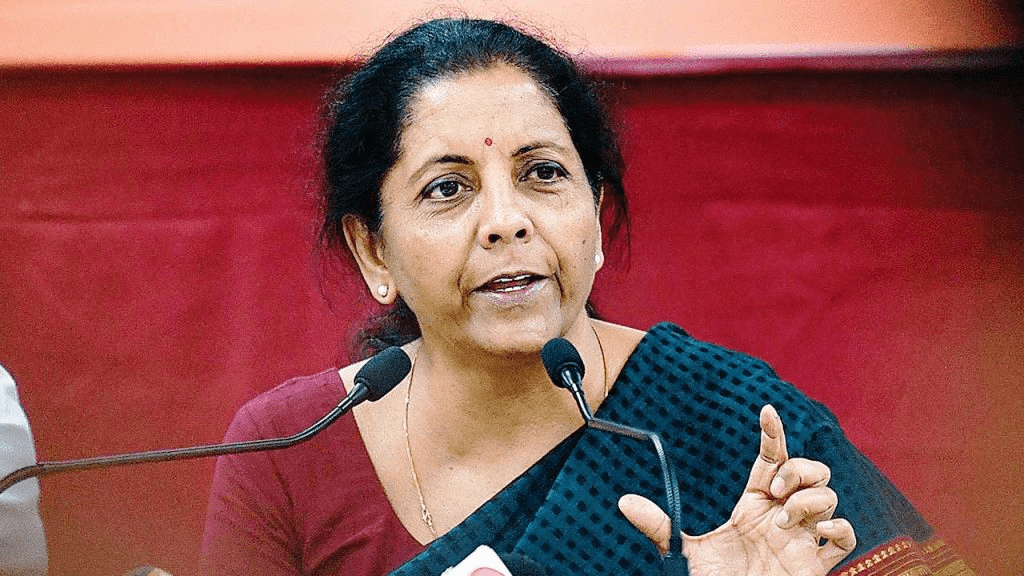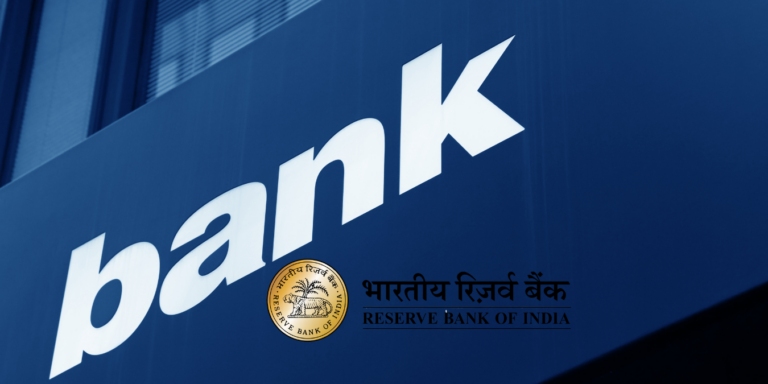
How Will You Pay in 2026? RBI’s New Rules Transform Digital Transactions!
India’s digital payment revolution faces a seismic shift! From April 2026, RBI’s new rules ditch outdated SMS OTPs for cutting-edge authentication—biometrics, app tokens, and more. Discover how these changes will shield your money from rising cyber frauds, empower seamless transactions, and reshape India’s booming cashless economy. Curious about what this means for your UPI, cards, or online shopping? Uncover the surprising security upgrades, pro tips, and pitfalls to avoid in this game-changing overhaul. Stay ahead—your wallet’s safety depends on it!
India’s digital payment ecosystem has transformed how we shop, pay bills, and transfer money, with platforms like UPI, digital wallets, and card payments becoming integral to daily life. However, rising cyber frauds and vulnerabilities in traditional SMS-based One-Time Passwords (OTPs) have prompted the Reserve Bank of India (RBI) to introduce new payment authentication rules effective April 1, 2026. This comprehensive guide explores these regulations, their impact on Indian consumers and businesses, and actionable steps to stay secure in this evolving landscape, ensuring a safer and more seamless digital payment experience.
Why India Needs New Payment Authentication Rules
India’s digital payment market is booming, with UPI alone processing over 131 billion transactions worth ₹200 lakh crore in FY 2024-25. Yet, this growth has attracted sophisticated cyber threats, with RBI reporting 13,516 internet and card fraud cases worth ₹520 crore in the same period. The reliance on SMS OTPs, while user-friendly, exposes vulnerabilities that demand a robust overhaul.
Limitations of SMS-Based OTPs
SMS OTPs, the backbone of India’s two-factor authentication (2FA) for over a decade, face critical challenges:
- Network Dependency: Delays or failures in SMS delivery due to poor network coverage disrupt transactions.
- SIM Swapping Risks: Fraudsters exploit SIM swapping to intercept OTPs, compromising user accounts.
- Phishing Vulnerabilities: Phishing attacks trick users into sharing OTPs, leading to unauthorized transactions.
- Scalability Issues: As transaction volumes soar, SMS infrastructure struggles to keep up, increasing costs for banks and vendors.
The RBI’s new framework aims to address these gaps by introducing flexible, tech-driven authentication methods while maintaining mandatory 2FA to ensure security.
Overview of RBI’s 2025 Authentication Directions
Announced on September 25, 2025, the RBI’s Authentication Mechanisms for Digital Payment Transactions Directions, 2025 set a new standard for securing digital payments in India. Effective from April 1, 2026, these guidelines apply to all payment system providers, including banks, fintechs, and non-bank entities. Below are the key pillars of the new rules:
- Mandatory 2FA: Every digital transaction must use two distinct authentication factors.
- Diverse Authentication Options: Factors can include:
- Something the user knows (e.g., password, PIN, passphrase).
- Something the user has (e.g., card, hardware/software token, device).
- Something the user is (e.g., biometrics like fingerprint or Aadhaar-based verification).
- Dynamic Authentication: At least one factor must be unique and transaction-specific to prevent fraud.
- Risk-Based Checks: Issuers can implement contextual checks (e.g., transaction location, user behavior) for added security.
- Cross-Border Compliance: Non-recurring card-not-present (CNP) international transactions require validation by October 1, 2026.
- Issuer Accountability: Banks and payment providers must compensate customers fully for losses due to non-compliance.
- Data Privacy: Compliance with the Digital Personal Data Protection Act, 2023, ensures user data security.
- Interoperability: Authentication solutions must work seamlessly across platforms and devices.
These rules mark a shift from the SMS OTP “monoculture” to a future-ready, secure payment ecosystem.
How the New Authentication Process Will Work
The RBI’s framework introduces a layered approach to secure digital payments, balancing user convenience with robust security. Here’s how it will function starting April 2026:
1. Two-Factor Authentication as the Foundation
Every digital payment—whether a UPI transfer, online card payment, or wallet transaction—will require two independent authentication factors. For example, entering a PIN (something you know) and approving via fingerprint (something you are) ensures that even if one factor is compromised, the transaction remains secure. This dual-layer approach aligns with global best practices and reduces fraud risks.
2. Moving Beyond SMS OTP
While SMS OTPs remain a valid option, the RBI encourages alternatives to address their limitations. Indian consumers can expect:
- Biometric Authentication: Fingerprint or facial recognition via smartphones or Aadhaar-based systems for fast, secure verification.
- App-Based Tokens: Banking apps generating one-time codes or push notifications for approval, reducing reliance on SMS.
- Device-Based Authentication: Using device fingerprints or hardware tokens to verify transactions securely.
- Passwords and PINs: Traditional secrets, when paired with a dynamic factor, remain effective.
- Passphrases and Cryptographic Keys: Advanced options for high-security transactions, especially in fintech apps.
These options cater to diverse user preferences, from tech-savvy urbanites to rural users with basic smartphones.
3. Dynamic Authentication Requirement
To prevent replay attacks—where fraudsters reuse stolen authentication data—at least one factor must be dynamic and unique to each transaction. Examples include a one-time code generated by an app or a biometric scan verified in real-time. This ensures that intercepted credentials cannot be reused, significantly enhancing security.
4. Risk-Based Verification for High-Risk Transactions
Banks and payment providers can implement additional checks for transactions flagged as high-risk based on:
- Transaction Location: Unusual geographic activity, such as a purchase from a new country.
- User Behavior: Deviations from typical spending patterns, like sudden high-value transfers.
- Device Attributes: Unrecognized devices or suspicious IP addresses.
- Historical Patterns: Comparing current transactions to a user’s payment history.
For instance, a large UPI transfer from a new device in a different city may trigger a biometric or app-based confirmation to ensure legitimacy.
5. Cross-Border Transaction Safeguards
For non-recurring card-not-present (CNP) international transactions (e.g., online shopping on global platforms), card issuers must implement validation mechanisms by October 1, 2026. This includes registering Bank Identification Numbers (BINs) with card networks to ensure compliance and reduce cross-border fraud.
Pro Tips for Consumers and Merchants
Adapting to the new rules requires proactive steps from both consumers and merchants to ensure a smooth transition and enhanced security.
For Consumers
- Update Apps Regularly: Ensure banking and payment apps are updated to access new authentication features like biometrics or app-based tokens.
- Enable Biometric Authentication: Use fingerprint or facial recognition where available for faster, more secure payments.
- Stay Vigilant: Never share OTPs, PINs, or passwords via SMS, calls, or emails, as fraudsters may exploit these.
- Monitor Transactions: Check app notifications for real-time transaction alerts and report suspicious activity immediately.
- Explore Alternatives: Try app-based tokens or push notifications to avoid SMS delays in low-network areas.
For Merchants and Fintechs
- Upgrade Payment Gateways: Ensure systems support RBI-compliant 2FA methods by April 2026.
- Implement Risk Analytics: Use behavioral and contextual data to flag high-risk transactions and reduce fraud.
- Educate Customers: Inform users about new authentication options and their benefits to build trust.
- Prepare for Cross-Border Compliance: Align systems for international CNP transaction validation by October 2026.
- Ensure Interoperability: Make authentication solutions accessible across all platforms and devices to avoid friction.
Common Mistakes to Avoid
As the new rules roll out, both consumers and businesses must avoid pitfalls that could compromise security or compliance:
- Over-Reliance on SMS OTPs: Continuing to use SMS OTPs exclusively, even when faster, safer alternatives are available.
- Ignoring Updates: Failing to update apps or devices, missing out on new authentication features.
- Neglecting Alerts: Overlooking transaction notifications or failing to act on suspicious activity.
- Weak Credentials: Using simple PINs or passwords that are easy to guess or hack.
- Non-Compliance by Merchants: Not upgrading payment systems to meet RBI’s 2FA and interoperability standards by the deadline.
Benefits of the New RBI Authentication Framework
The shift to a modernized 2FA framework offers significant advantages for India’s digital payment ecosystem:
- Enhanced Security: Diverse authentication methods and dynamic factors reduce fraud risks, protecting users from cyber threats like phishing and SIM swapping.
- Improved User Experience: Biometrics and app-based tokens enable faster, more seamless payments, especially in areas with poor network coverage.
- Consumer Protection: Issuers are liable for full compensation if non-compliance leads to financial losses, ensuring accountability.
- Future-Proofing: The framework supports emerging technologies like passkeys and tokenization, preparing India for next-generation payment systems.
- Global Alignment: Stricter cross-border transaction rules align India with international security standards, boosting trust in global e-commerce.
- Financial Inclusion: Flexible authentication options make digital payments accessible to diverse populations, including those in rural areas with limited connectivity.
These benefits position India’s digital economy, projected to reach $481 billion in transactions by 2028-29, for sustained growth and resilience.
How Banks and Fintechs Are Preparing
The transition to the new framework requires significant upgrades from banks and fintechs. Industry leaders like Vishwas Patel, Chair of the Payments Council of India, have praised the RBI’s balance of security and innovation, noting that the flexibility allows issuers to adopt next-generation tools like biometrics and AI-driven risk checks. Fintechs like Paytm and Wibmo are already integrating solutions such as app-based tokens and passkeys to comply with the guidelines.
Banks must also ensure compliance with the Digital Personal Data Protection Act, 2023, to safeguard user data during authentication. For cross-border transactions, issuers are registering BINs with card networks and developing risk-based systems to validate international CNP payments by October 2026.
Impact on India’s Digital Economy
India’s digital payment ecosystem is among the world’s most dynamic, with UPI leading global transaction volumes. The new rules strengthen this ecosystem by:
- Reducing Fraud: RBI data indicates ₹36,014 crore in banking frauds in FY 2024-25, driven largely by digital and loan frauds. The new framework aims to curb this through robust authentication.
- Boosting Consumer Confidence: Full compensation for non-compliant losses and secure authentication methods encourage wider adoption of digital payments.
- Supporting Growth: With digital transactions expected to grow significantly, the rules ensure scalability and reliability for businesses and consumers.
- Enhancing Global Competitiveness: Alignment with global standards makes India a trusted player in cross-border e-commerce.
Key Takeaways
- Mandatory 2FA: From April 2026, all digital payments in India require two-factor authentication.
- Beyond SMS OTP: Alternatives like biometrics, app-based tokens, passwords, and passphrases are encouraged.
- Dynamic Factor: At least one authentication factor must be unique and transaction-specific.
- Issuer Liability: Banks and payment providers must compensate users for losses due to non-compliance.
- Cross-Border Rules: Validation for international CNP transactions is mandatory by October 2026.
- Risk-Based Checks: Contextual factors like location and user behavior can trigger additional verification.
Final Thought: Preparing for a Secure Digital Payment Future
As India gears up for the RBI’s new payment authentication rules by April 2026, consumers, merchants, and payment providers must adapt to ensure a secure and seamless experience. Start by exploring biometric and app-based authentication options on your banking apps, updating devices regularly, and staying vigilant against phishing attempts. Merchants and fintechs should prioritize upgrading payment systems to comply with 2FA and interoperability standards while educating customers about these changes.
This transformation in India’s payment authentication landscape is poised to safeguard digital transactions from fraud while enhancing the ease of doing business online. Staying informed and adapting early will help everyone leverage the benefits of these new security measures.
For those invested in India’s digital payment ecosystem, understanding and complying with these new rules is no longer optional but essential.






























